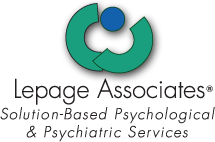Understanding Autism
Parents are usually the first to notice their child having difficulty and failing to meet developmental milestones. Some things parents might notice are lack of joyful facial expressions by six months, difficulty engaging in give and take interactions by nine months, and delayed language development.
There are three distinctive areas of difficulty which characterize autism. Autistic children have difficulties with social interaction, problems with verbal and nonverbal communication, and repetitive behaviors or narrow, obsessive interests. These behaviors can range in impact from mild to disabling.
The hallmark feature of autism is impaired social interaction. Some children show hints of problems within the first few months of life, while others may not show deficits until they are two years old or later. Some children may develop normally until the age of two, but then they stop making gains in language and social skills or they lose skills that they had already acquired. No two children with autism are alike and presentation may vary significantly.
Autism impacts 1 in 150 people. It occurs in all racial, ethnic, and socioeconomic groups. Autism is four times more likely to occur in boys. Autism impacts one’s overall ability to communicate with and relate to others. Symptoms range from mild to severe. There are five disorders that fall under the Autism Spectrum. These include Asperger Syndrome, Rett Syndrome, Pervasive Developmental Disorder, NOS, and Childhood Disintegrative Disorder.
As children with autism grow up, they may respond differently to their environment. Many adolescents are overwhelmed by the transition between childhood and adulthood. Parents should expect this to be true of adolescents with autism as well. While some behaviors improve during teenage years, some tend to get worse. You may notice an increase in repetitive and aggressive behaviors as the teen has difficulty managing the stress and confusion associated with adolescence. Not to mention the physical and hormonal changes! This is also a time where the teen is at risk for developing anxiety or depression as they become increasingly aware that they are different from their peers.
Treatment: The presentation of autism and other spectrum disorders varies significantly in adults. Some are able to live independently and maintain employment while others have significant difficulty completing daily tasks.
Long before your child finishes school, parents should research available social supports to assist your child with autism in adjusting to the “adult world.”
While there is no identifiable fully effective cure for autism, early intervention obtains maximum benefits for your child. Early intervention should focus on improving communication, social, and cognitive skills.
Although there is no single treatment protocol for all children with autism, most individuals respond best to highly structured behavioral programs.
Psychosocial and behavioral interventions are key parts of comprehensive treatment programs. In addition to these interventions, therapies often include occupational therapy, sensory integration therapy, and speech therapy.
If you have concerns about your child’s development, speak to your pediatrician to determine the best course of action and complete screenings with other qualified professionals, such as a psychologist.
Click here to download this article as a PDF
